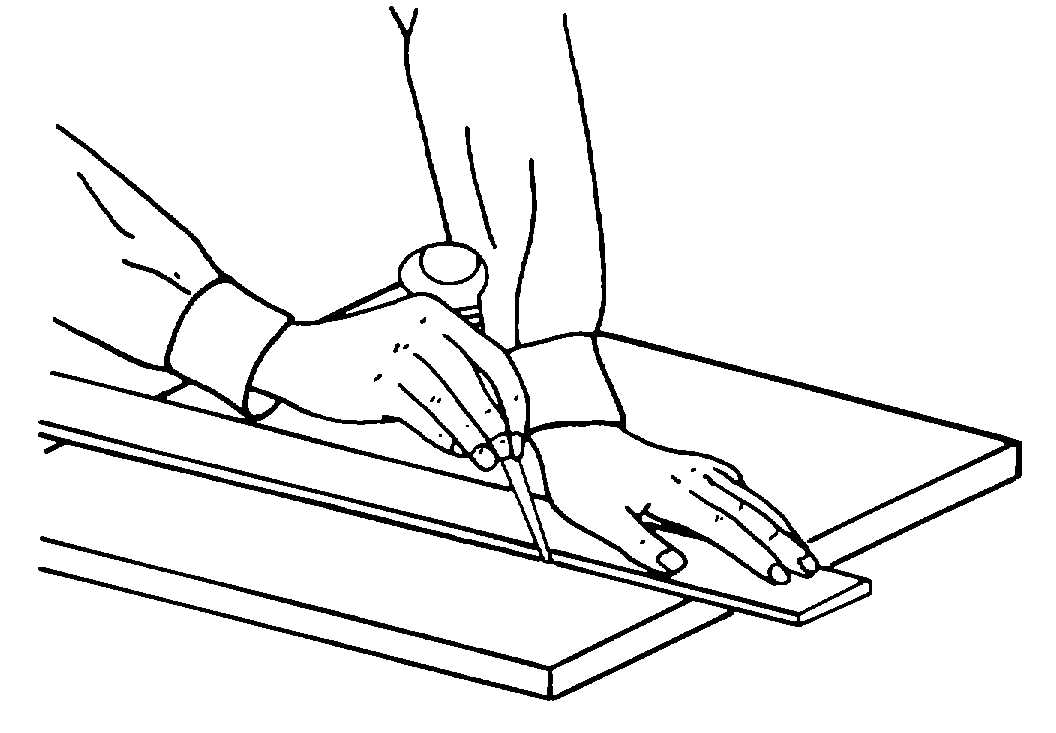TM 1-1500-204-23-9
Figure 4-48. Awl
a.
Use The following steps provide procedures for
one use of an awl:
(1)
Place the metal to be scribed on a flat
surface. Place a ruler or straightedge on the guide
marks already measured and placed on the metal.
(2)
Remove the protective cover from the
awl.
(3)
Hold the straightedge firmly. Hold the awl
as shown in figure 4-49, and scribe a line along the
straightedge.
Figure 4-49. Scribing with an Awl
(4)
Replace the protective cover on the awl.
b.
Repair. The normal order for reconditioning an
awl blade is to harden, grind, and sharpen. Usually all
three operations are not needed.
(1)
Hardening. Hardening and tempering are
only required if the tempered part has been broken or
ground away, or if the tool has been overheated.
Harden and temper in accordance with the hardening
and tempering instructions for screwdrivers in paragraph
4-3d (3).
(2)
Grinding and sharpening. Grind or sharpen
after tempering and hardening, or if the blade has lost
its shape from repeated sharpening.
c.
Care. Observe the following practices for the
care and upkeep of awls:
(1)
Keep points covered when not in use and
stow awls in racks or in tool boxes.
(2)
Lightly oil metal parts before storing.
4-7. Knives. Most knives are used to cut, pare, and
trim wood, leather, rubber, and other soft materials.
a.
Types. The types that the aircraft repairer will
probably encounter are the shop knife, pocket knife, and
the putty knife.
(1)
Utility knife. The utility knife can be used
to cut cardboard, and paper. It has an aluminum
handle, and is furnished with interchangeable blades
which are stored in the handle. A typical utility knife is
shown in figure 4-50.
Figure 4-50. Utility Knife
(2)
Pocket knife. Pocket knives are used for
light cutting, sharpening pencils, cutting string, and
whittling. They are not suitable for heavy work. There
are many styles and shapes as shown in figure 4-51.
Some are multipurpose and have an assortment of
blades which are used for forcing holes, driving screws,
opening cans, as well as cutting. The blades are hinged
and contained within the case when not in use and are
spring loaded to keep them firmly in place when open or
closed.
(3)
Putty knife. A putty knife is used for
applying putty compound, sealant and for scraping
gasket material. The blade has a wide square point and
is available in different lengths and widths. A typical
putty knife is shown in figure 4-52.
b.
Safety. It is common knowledge that knives are
usually sharp and can cause serious injury if improperly
used. Observe the following precautions when using
knives:
4-17





